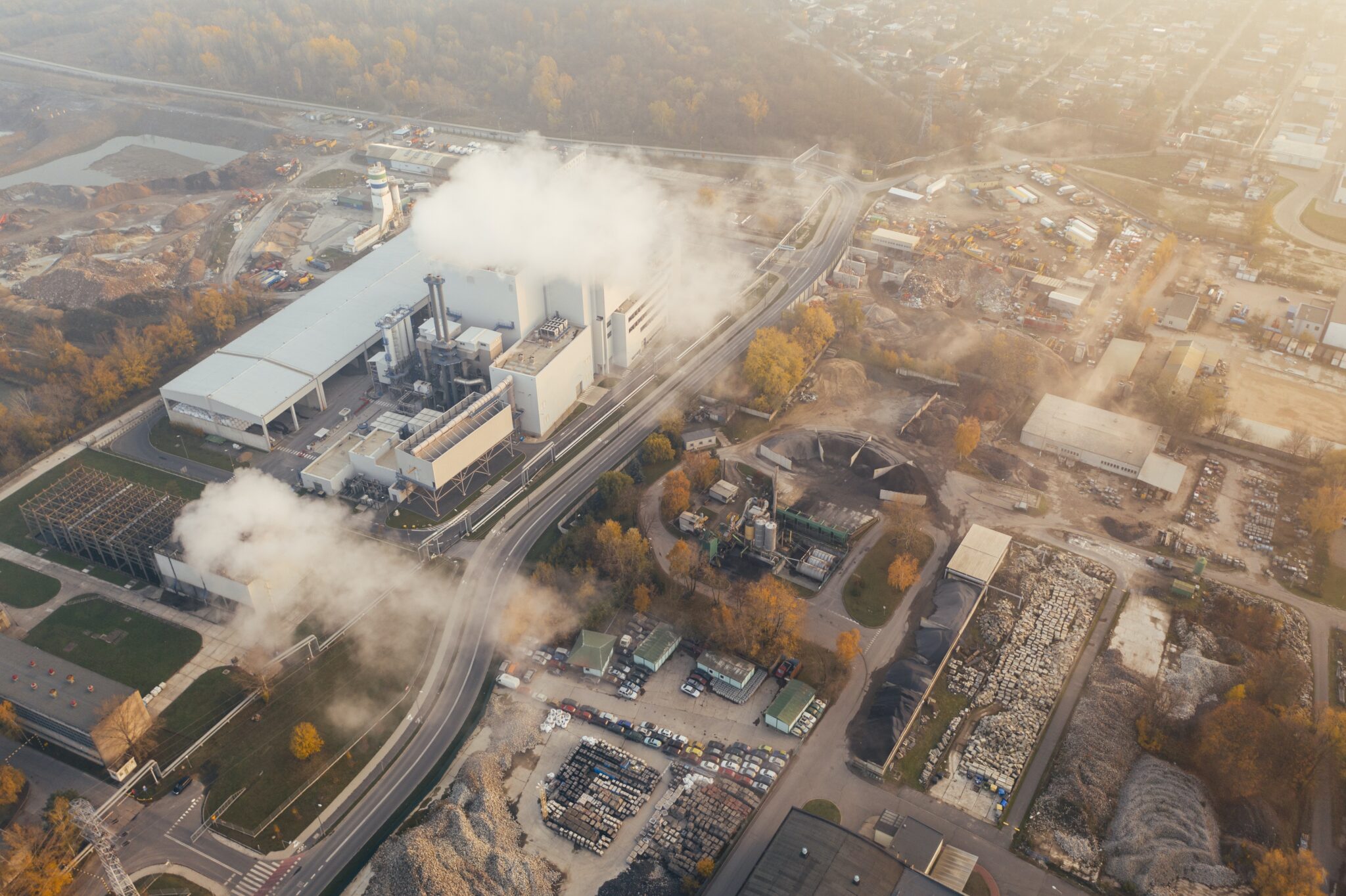“Our planet is at a crossroads, and our decisions today will shape the world our children inherit. Carbon footprints are at the heart of this dilemma, as they are a primary driver of climate change.“
Every Step Counts: Unveiling the Secrets of Your Carbon Footprint
In a world grappling with environmental challenges, it’s crucial to understand the carbon footprints we leave behind. Your carbon footprint is the sum of all greenhouse gas emissions directly or indirectly associated with your activities. From your morning commute to your shopping choices, every action contributes to it.
The carbon footprint (the greenhouse gas footprint) compares the overall quantity of greenhouse gases emitted by an activity, product, firm, or nation. Carbon footprints are often presented in tons of CO2- equivalent emissions per unit of comparison, such as per year, person, kg protein, km driven, and so on.
The carbon footprint of a product comprises emissions over the whole life cycle, from manufacture through the supply chain to final use and disposal. The term “carbon footprint” is often quantified as carbon dioxide equivalent (CO2eq) emissions per unit of comparison. It encompasses the cumulative greenhouse gas emissions from various economic activities, events, organizations, services, and more.
Imagine our daily life as a series of interconnected threads, each leaving its mark on the environment. The energy we consume, the transportation we use, the food we eat, and even the products we buy all weave together to form this intricate tapestry of emissions.
With the proper knowledge and a commitment to sustainable living, we can unravel this carbon web and reduce our impact on the Earth’s climate. Small changes in our daily routine can lead to substantial reductions in our carbon footprint. It’s not about sacrificing our lifestyle but about making informed choices that benefit us and the environment.
Greening Our Footprints: Why It’s a Matter of Survival?
Our planet is at a crossroads, and our decisions today will shape the world our children inherit. Carbon footprints are at the heart of this dilemma, as they are a primary driver of climate change.
Reducing our carbon footprints isn’t just an eco-friendly trend; it’s a matter of environmental sustainability and, ultimately, the survival of our planet. Picture a world where the effects of climate change, driven by soaring carbon emissions, have gone unchecked.
More extreme weather events, rising sea levels, dwindling resources, and ecological disruptions would become the norm. The consequences would extend far beyond melting glaciers and scorching temperatures. It would affect everything we hold dear: our homes, our health, our communities, and the biodiversity that makes our planet rich and diverse.
But here’s the glimmer of hope: each of us possesses the power to alter this trajectory. By recognizing the significance of our carbon footprints and taking proactive steps to reduce them, we can contribute to a collective effort that could change the course of history. The choices we make in our daily lives ripple outward, influencing industries, policies, and global efforts to combat climate change.
It’s crucial to understand that reducing our carbon footprints isn’t just about being environmentally responsible; it’s about safeguarding the future for generations to come. Our actions today will determine whether our children inherit a planet on the brink of catastrophe or one where sustainable living is the norm.

From Carbon-heavy to Carbon-light: Your Blueprint for Sustainable Living:
Everyday activities play a substantial role in contributing to carbon emissions, which in turn accelerate climate change. The burning of fossil fuels for transportation, heating, and electricity generation is a significant source of carbon emissions. Additionally, the production and transportation of food, especially when it involves long supply chains, contribute to carbon emissions.
Furthermore, waste generation and its decomposition in landfills produces methane, a potent greenhouse gas. The use of energy-intensive consumer goods and the extraction of natural resources also play their part in carbon emissions.
The significance of individual actions in mitigating climate change cannot be emphasized enough. As per findings, over 70% of worldwide carbon emissions are attributable to the choices made by individuals, ranging from their energy consumption habits to their preferences in transportation.
Every endeavour to curtail carbon emissions at the individual level, whether through the adoption of energy-efficient practices, waste reduction, the selection of sustainable transportation modes, or the conscious choice of environmentally friendly foods, contributes to a collective reduction in emissions.
These personal actions wield a dual impact: they directly decrease emissions while simultaneously conveying a potent message to industries, governments, and society at large, spurring broader systemic changes essential for a sustainable future.
Thus, individual actions play a pivotal role in the global battle against climate change, showcasing the capacity of individuals to enact positive change on a worldwide scale.
From choosing sustainable transportation options to reducing energy consumption, we hold the power to shape a greener, more sustainable future.
Practical Tips and Strategies in Reducing Carbon Footprint in Daily Life: Paving the Way to a Greener Tomorrow
This series of articles aims to empower you with practical tips and innovative strategies to make sustainable living an attainable reality. By exploring various facets of daily life, we’ll guide you on a journey towards a more environmentally conscious existence, demonstrating that each choice you make holds the power to drive positive change and contribute to a greener, more sustainable world. So, let’s embark on this transformative path, where small actions lead to significant impacts and where a sustainable future is within reach for all.
- Promoting Public Transportation and Carpooling
One of the most effective ways to reduce carbon emissions from personal travel is by promoting public transportation and carpooling. By sharing rides or opting for buses, subways, or trains, individuals can significantly decrease their carbon footprint.
This not only eases traffic congestion but also contributes to cleaner air and reduced greenhouse gas emissions. Imagine a future where fewer cars clog the streets, thanks to a collective commitment to sustainable commuting options.
- Emphasizing the Benefits of Walking, Cycling, and Electric Vehicles:
Walking and cycling, besides promoting healthier lifestyles, are eco-friendly transportation choices. They produce no emissions and serve as excellent options for short-distance travel.
Moreover, electric vehicles (EVs) are becoming increasingly popular, offering a clean and energy-efficient means of transportation. Thanks to advancements in EV technology and the expansion of charging infrastructure, EVs are becoming more accessible and affordable for those who prioritize environmental sustainability.

Opting for these transportation modes isn’t just a move towards sustainability; it’s a significant stride towards a more environmentally friendly future.
- Importance of Energy-Efficient Appliances
Energy-efficient appliances are the unsung heroes of sustainability at home. They consume less energy, lower electricity bills, and reduce carbon emissions. Investing in appliances with the ENERGY STAR label, which meets high energy efficiency standards, is a smart move for both your pocket and the planet. It’s about making your home a beacon of sustainability.
Harnessing renewable energy sources like solar panels and wind turbines is a transformative step towards a sustainable home. These technologies generate clean electricity, reduce dependence on fossil fuels, and often result in net energy savings. By becoming your own energy producer, you’ll not only reduce your carbon footprint but also enjoy the benefits of green energy.
- Reducing Waste: Unlocking the Green Gateway to Carbon Reduction
Waste management isn’t just about tidying up; it’s a powerful lever for slashing carbon emissions and fostering a sustainable future. The carbon footprint of waste is profound, with landfills emitting methane, a potent greenhouse gas. But here’s the good news: by embracing strategies for reducing, reusing, and recycling, we can dramatically curtail the carbon toll of waste.
Moreover, composting, a humble practice, plays a pivotal role in carbon reduction. It not only diverts organic waste from methane-producing landfills but also enriches our soils, acting as a carbon sink. Together, these waste-wise practices represent a potent toolset to shrink our carbon footprint and tread more lightly on the planet.
- The Importance of Fixing Leaks and Using Efficient Fixtures
Water conservation is crucial not only for preserving the resource but also for reducing carbon emissions. Wasted water leads to the unnecessary use of energy in its treatment, pumping, and heating. According to the EPA, American homes with leaks waste over 10,000 gallons of water annually, contributing significantly to household carbon emissions.
Therefore, addressing water waste is a critical step in environmental sustainability. Simply put, “Fix the Drips, Trim the Emissions!” When you fix leaks and install efficient fixtures, you’re not just saving water; you’re cutting down on the energy required to treat and distribute it.
This not only reduces your water bill but also your carbon footprint. So, whether it’s repairing a dripping faucet or replacing old, inefficient toilets and showerheads, these actions aren’t just drops in the bucket; they’re meaningful steps toward a more sustainable future for both water and the planet.
CONCLUSION
In a world where the future of our planet hangs in the balance, we each must take responsibility for our carbon footprint. As we’ve explored practical strategies and tips in this article, remember that every small action can make a significant impact.
From choosing sustainable transportation options to reducing energy consumption, we hold the power to shape a greener, more sustainable future. So, let’s embark on this journey together, leaving behind a legacy of conscious choices and a planet that thrives. As we step forward, let’s remember that it’s not just our carbon footprint. We’re
reducing – it’s our footprint on the pages of history, etching a story of positive change for generations to come.
REFERENCES:
- IPCC 2018, ‘Global Warming of 1.5°C. An IPCC Special Report Available at: https://www.ipcc.ch/sr15/
- EPA 2021, ‘Methane Emissions from Landfills’, U.S. Environmental Protection Agency, Available at: https://www.epa.gov/lmop/basic- information-about-landfill-gas
- Global Carbon Atlas 2020, ‘Global Carbon Atlas – CO2 emissions’, Available at: http://www.globalcarbonatlas.org
- International Energy Agency (IEA) 2021, ‘Global EV Outlook 2021: Accelerating the Transition to Electric Mobility’, Available at: https://www.iea.org/reports/global-ev-outlook-2021
- U.S. Environmental Protection Agency (EPA), ‘Reducing Carbon Footprint Through Water Savings’, Available at: https://www.epa.gov/watersense/reducing-carbon-footprint-through- water-savings
- REN21 2021, ‘Renewables 2021 Global Status Report’, Available at: https://www.ren21.net/gsr-2021/
Also Read: How Anthropology Helps Define Terms Growth and Differences
Malaika Awan is a Bachelor’s student majoring in Psychology at The Institute of Professional Psychology, Bahria University Karachi. Currently serving as a Science Writing Intern at Scientia Pakistan, her areas of expertise encompass Psychology, Biology, Environmental Sciences, Astronomy, and Space Exploration. Malaika aspires to leverage her passion for science communication through her contributions to Scientia Magazine Pakistan.

